How do you choose a color scheme for a living room? Designers share their secrets for a put-together look
Picking a living room color scheme is more than just choosing your favorite paint – here's how to establish a successful palette
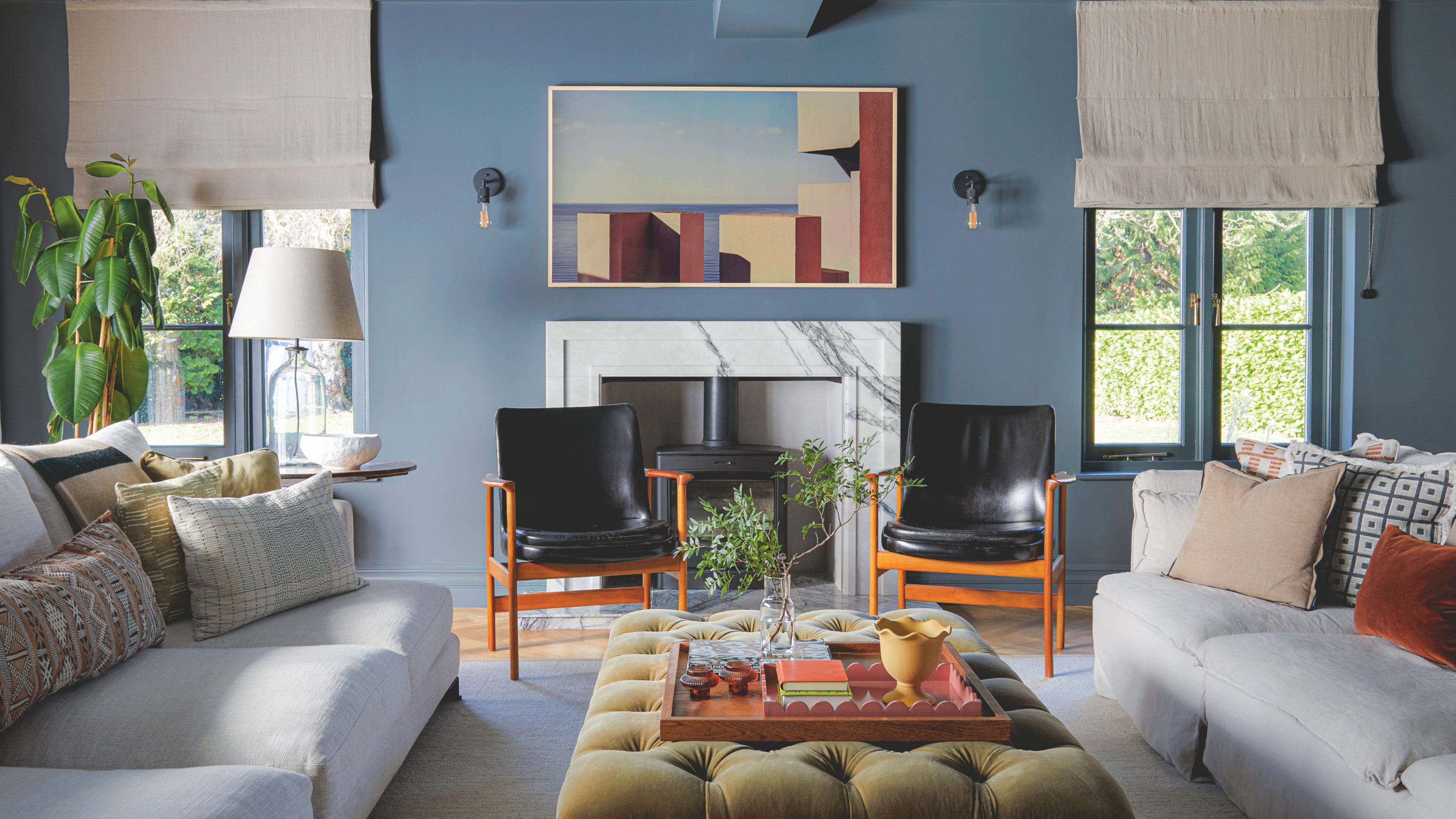

If you've ever spent hours mulling over near-identical paint samples, you'll know that choosing a color scheme for a living room is never easy. There are numerous things to consider before you settle on a palette – from the availability of natural light and the aspect of the room to practicalities (white boucle with young children? Never a good idea).
And of course, choosing a scheme goes far beyond picking a paint color – you also need to consider the other elements of your space and how they tie together, from furniture to artwork to soft furnishings.
Fortunately, there are tried and tested ways to establish a successful living room color scheme – and to help you out, we've asked interior designers and color experts for their best living room ideas to create a cool, contemporary space.

Ellen is Livingetc's print editor, and an experienced interiors journalist. To find out how to create a successful living room color scheme, she quizzed interior designers and color experts for their insights.
How do you choose a color scheme for a living room?
1. Consider the aspect of your room
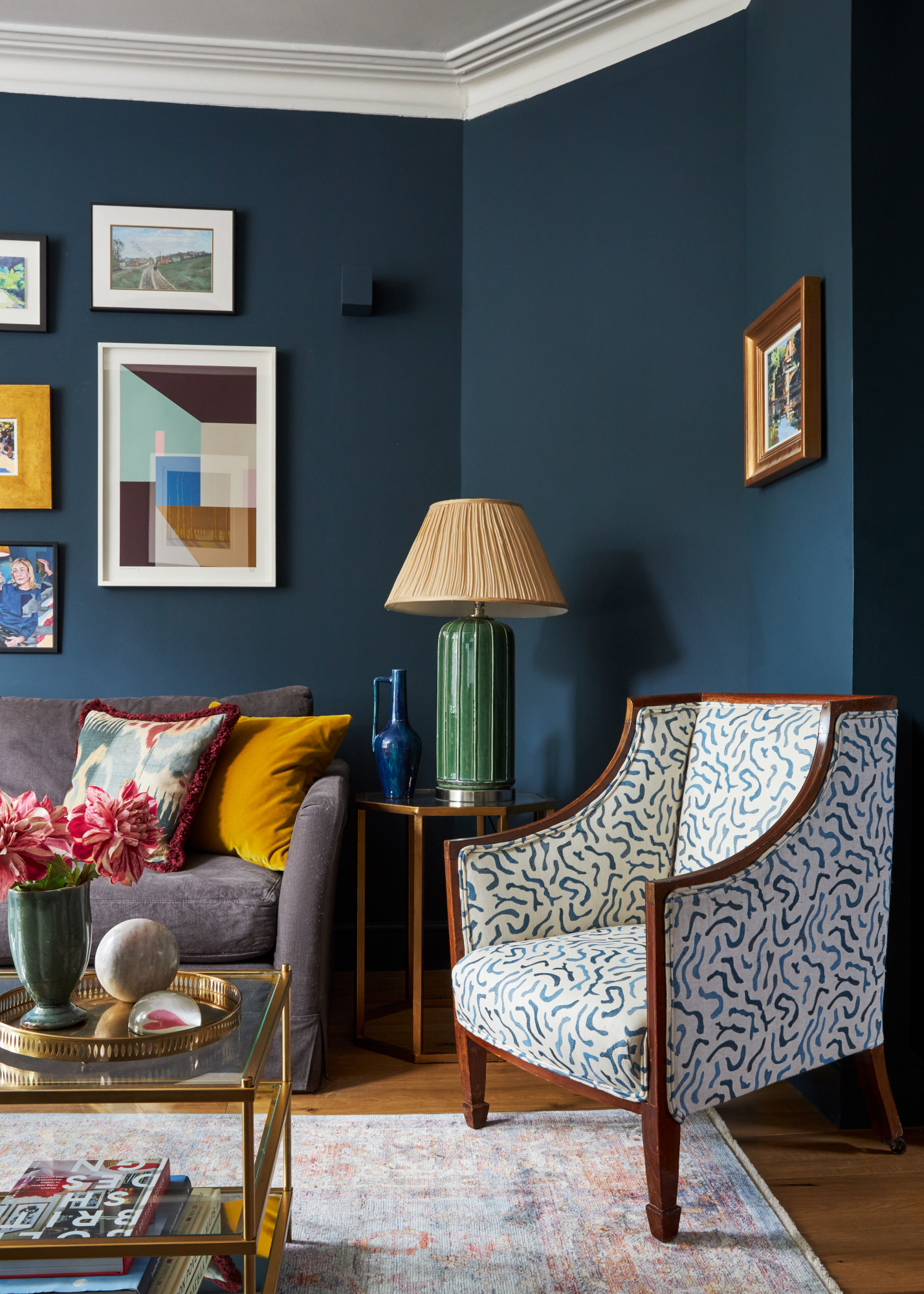
Lighting can dramatically change your perception of a certain color – even making it appear warmer or cooler – so paying attention to the aspect of your room is incredibly important. ‘While you may be attracted to a color in a paint showroom or seen through editorial or social, it may not be fit for purpose in the intended room,' says Patrick O’Donnell, color consultant and brand ambassador for Farrow & Ball. 'All paint manufacturers websites will give you great advice on considerations.’
'It’s important to spend some time working out if the room faces north, south, east or west,' says Irene Gunter of London-based architecture and design studio Gunter & Co. 'North-facing rooms attract a cooler natural light, and generally less of it, so some colors can appear cold. To bounce light around the space and brighten the effects of the light, use a warm color with a pink or yellow undertone.' Alternatively, 'if you are feeling a shade braver, embrace the darkness with a deep color that will lend a cocooning feel to the space.'
Lisa Marconi, founder of Dublin studio DesignLed, agrees. One of the things she always advises clients with dark living rooms, she says, is that 'if the room is dark naturally, there isn’t a magic way of getting more light into a space – so the best thing to do is to embrace the darkness and change the conversation,' she says. 'Go dark on the walls and you no longer notice that the room gets less light. Make it about the wow factor people feel when they walk into it.’
In contrast, a south-facing room enjoys warm light for most of the day – so most colors work well. 'Soft, pale colors, in particular, come to life, maximising the feeling of light and space,' says Irene Gunter. For east- or west-facing room, consider what time of day you'll be using it most. 'Light in a west-facing room is cooler in the morning and brighter in the afternoon, so if you tend to use your west-facing room in the morning, choose a color that will inject warmth. But if you predominantly use it in the afternoon, offset the light with a cooler blue- or green-based color. The opposite is true of east-facing rooms, which are bathed in a warm bright light in the morning and a cooler light in the afternoon.'
2. Think about what you want to achieve
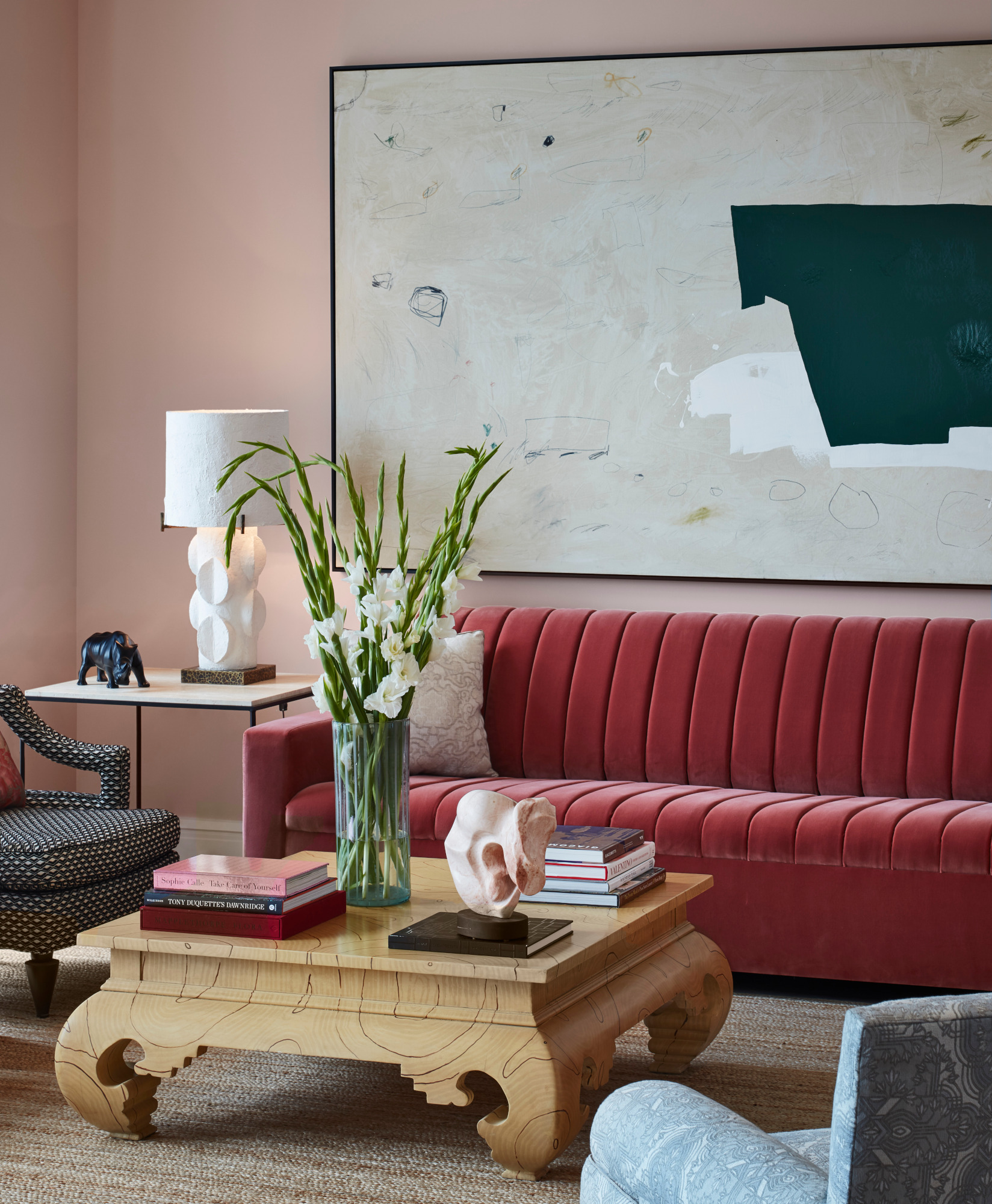
The palette you choose for a cozy, cocooning snug-style living room is going to be different to a more formal, conversation-ready space – so be sure to take this into consideration.
‘I think it’s important to factor in how you will use the space, and especially what overall feeling you want to achieve,’ says Chicago-based interior designer Bruce Fox who created this pink living room, above. ‘For example, if you wanted to create a lounge-like vibe for cocktails with friends or watching TV in the evening, we could be looking at darker, richer colors. On the other hand, if you're using your living room during the day to work or gather with family, we might consider something less moody.’
Louise McGarry, owner of luxury London interior design firm Pineapple Interiors, also considers materials at this point. ‘For a more formal space that will be used in the evening I would recommend warm rich colors that work with low level lighting,' she says. 'Luxe velvets, silks and embroidered fabrics work well, and these can be accompanied by burled wood and antique brass to further elevate the space. In a more relaxed space, light natural tones paired with muted earth tones work wellLightweight linens and sheer fabrics are a nod to a less formal use of the space. Organic woods, natural stone and relaxed leather work well within this palette.’
And of course, it's about which colors work specifically for you. ‘In order to choose colors that we’ll love and be comfortable with, we need to understand what environments and surroundings make us at ease,’ says Justyna Korczynska of Crown Paints. ‘This doesn’t always need to be restful and calming – you may feel more at home in a dark and dramatic room. It’s all about what works for you.’
3. Don’t start with the walls

‘I think people often start with the walls of the room by default when they’re considering a color scheme, but there are so many other places to start,’ says Lisa Marconi. ‘In some rooms I’ve designed, we’ve started with a single piece that is particularly striking – a piece of art or a living room rug – and built the room out from there.’
‘Sometimes a scheme can be built on a single small element,’ agrees London interior designer Laura Stephens. ‘With one client, we showed her a simple piece of braid and she loved it, so we based the whole scheme on it by pulling out the colors from the threads. A client once showed me a photo she took on a country walk of a mossy piece of bark on autumnal leaves and it inspired the whole scheme for a living room. Consider what it is about the colors in a picture or object you love the most and make sure they are prominent in your scheme.’
This grey living room, above, is so much richer thanks to the pieces that have been layered on top.
4. Think practically

Of course, there's little use in opting for beautiful off-whites or neutrals if you have sticky-handed kids – or dark, clingy fabrics if you have shedding pets. ‘When it comes to furnishing and furniture, you need to think about who is going to use it and how often,’ says Lisa Marconi. ‘If it’s the family room where the kids are going to be hanging out every day, don’t choose something light for the furniture and rugs – even the easy clean fabrics. You’ll just be constantly cleaning them! Go for darker colors (in stain-resistant fabrics) that will stand some wear and tear.’
If you're designing a more formal affair that'll be used less often, you have more free reign – but you still need to consider other elements, like light. 'When you’re choosing window treatments, if it’s windows that get sun all day, don’t go for darker fabrics or really strong colors, as they will inevitably fade,' Lisa adds. 'The same goes for rugs: if you put a rug in a position that will have sunshine shining on it every day, those lovely vibrant colors might fade faster than you would like.’
5. Layer your palette
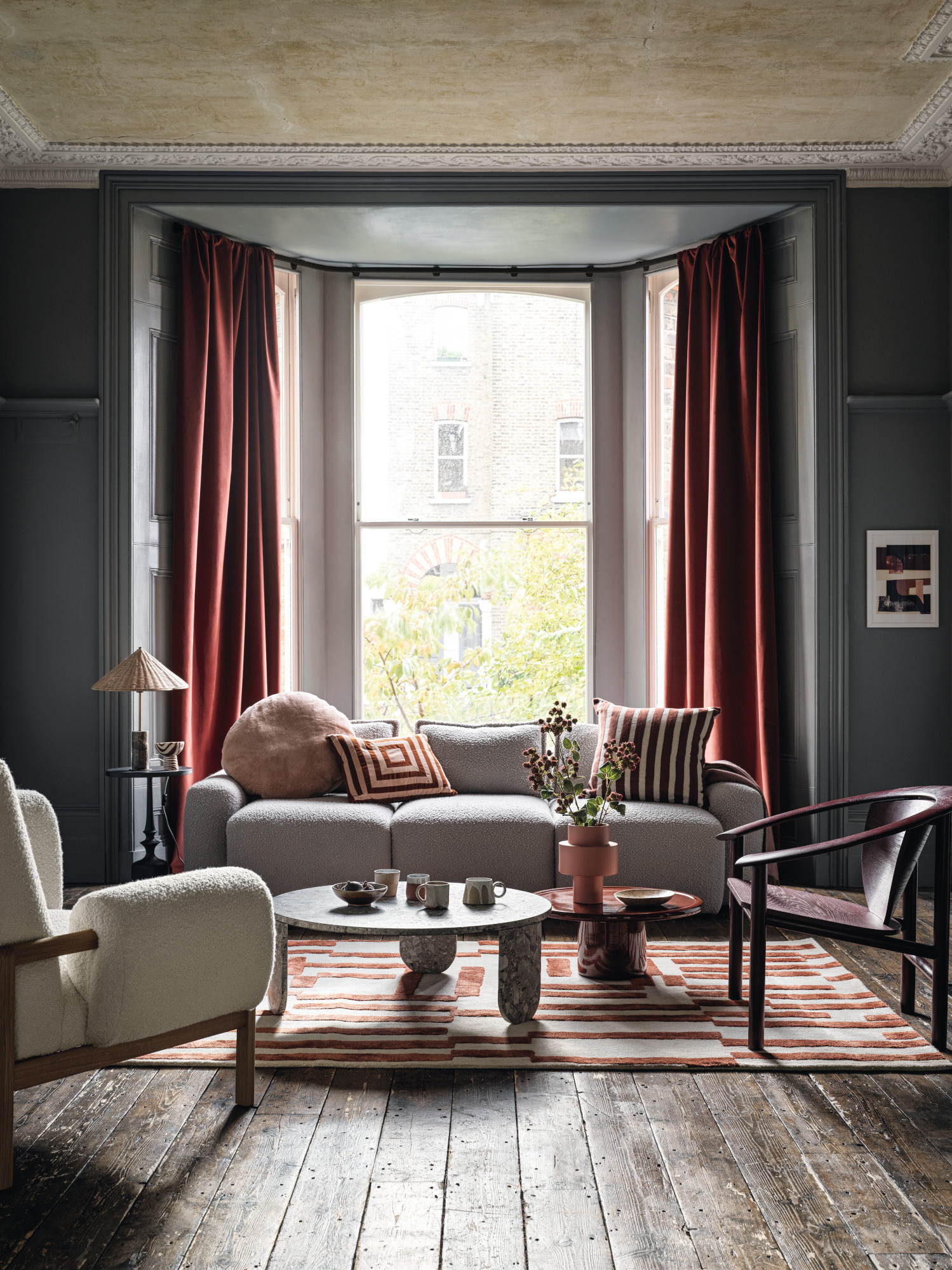
Once you've established a base color, there are ways to build on it to create a scheme with depth and interest. ‘I’m always inspired by a combination of colors in a room scheme but will always consider their proportions to create the most dynamic schemes,’ says London-based interior designer Shanade McAllister-Fisher. ‘Start with your dominant color and layer this with accent colors. For a living space, I like to use a casual palette of earthy reds, foliage greens alongside denim blues and leather browns to give a relaxed, feet-up kind of feel.’
Alternatively, use tonal variations for a more intense scheme. 'There are various ways to create a simple background scheme but using the Architectural collection from Paint & Paper Library is foolproof,' says Irene Gunter. 'Arranged chromatically in 19 groups of five gradual shades numbered I, II, III, IV and V, and ranging from light to dark and warm to cool, each tone can be used, either individually or in combination, on ceilings, cornices, walls and woodwork. My go-to shade is Slate, a twist on neutral with warm undertones that complements most other colors.'
6. Consider neutrals

Among the color schemes the experts we spoke to recommended, neutrals were by far the most popular. ‘People don’t want to hear “beige", but it is a classic, quality color that works well in so many environments,’ says Eugene Colberg, principal at Brooklyn-based Colberg Architecture.
He is keen to stress that neutral living room ideas have depth and variety that can add real interest. 'Keep in mind you have warm and cool neutrals,' he says. 'The warm neutrals are the beige and light browns, and can occasionally veer into rust or mustard; then you have the cool neutrals such as light grey and dark grey. These neutrals are timeless and beautiful and can truly make a room look elegant.’
You can then bring in a contrasting color in smaller amounts to inject interest into the scheme. ‘That contrast color or accent color, whatever is the yin to the yang of the neutral scheme, should be fairly easy to change because it’s more on-trend,’ says Eugene.
'If your room benefits from lots of natural light, create a color scheme that allows space for flexibility, with the option of layering in interesting colors, textures, shapes and patterns,' adds Irene Gunter. 'To achieve this, we start with a very simple background color scheme, perhaps consisting of subtle tones of ivory, grey or taupe. We then add interest with soft furnishings, such as cushions, pouffes, fabric blinds and lampshades.'
7. Don’t forget the finishing touches
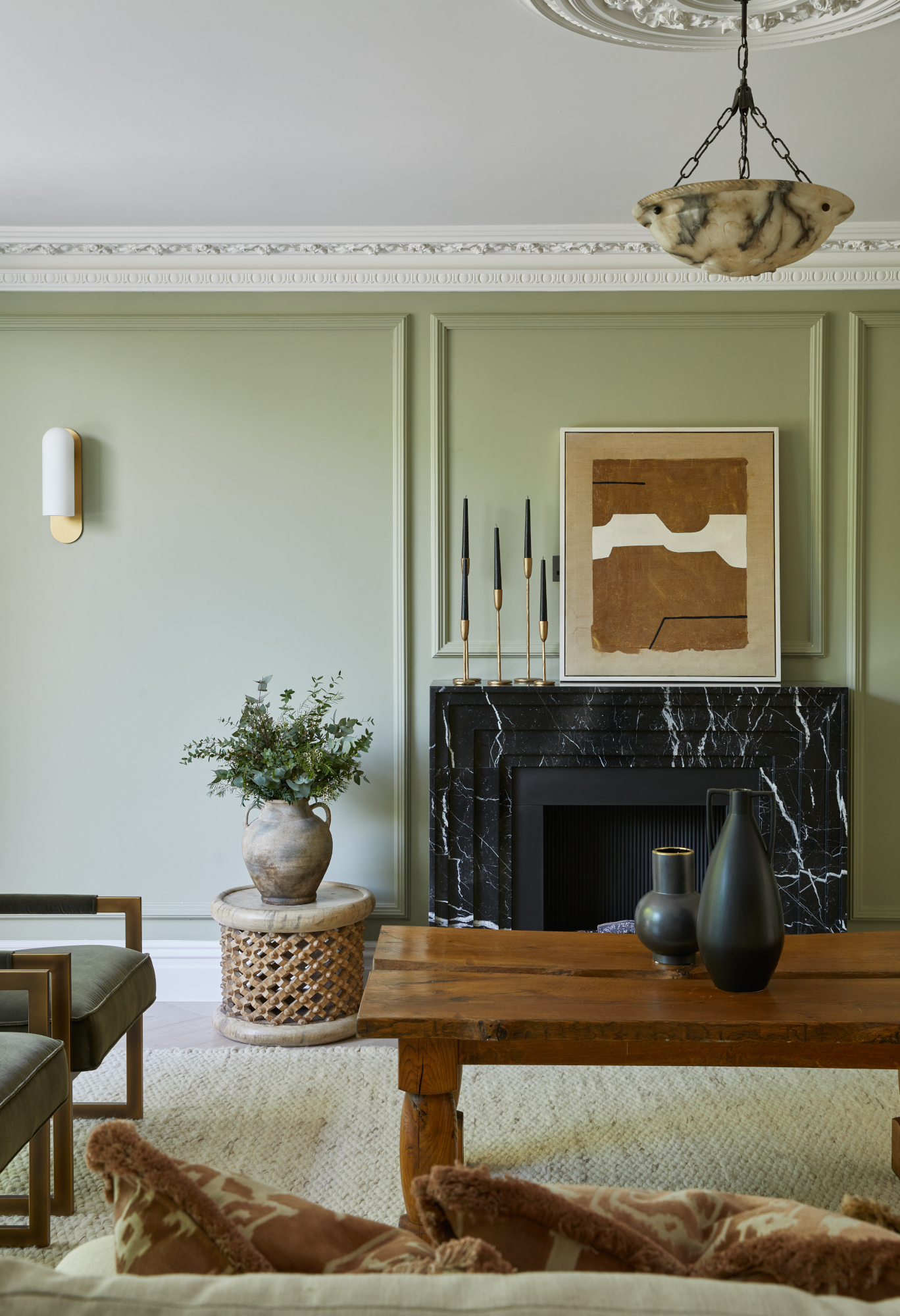
‘Textures and fabrics are another great way to establish a color scheme,’ says Louise McGarry. ‘I try to find one fabric that encompasses all the colors in the room to really tie a scheme together – it can be as small as in the form of a decorative cushion. Layering in textures such as stone, brass, ceramic, glass can add depth to a space.'
And of course, a crucial component of an established living room color scheme is artwork. ‘Don’t forget to accessorize your walls!' Louise adds. 'Art is an extremely easy and non-permanent way of introducing unexpected colors into a room, and can encompass a range of mediums – from paintings, to photography, sculpture or even fabric wall hangings to add layers of narrative and beauty.'
8. Don’t be overconfident – but don’t be shy either
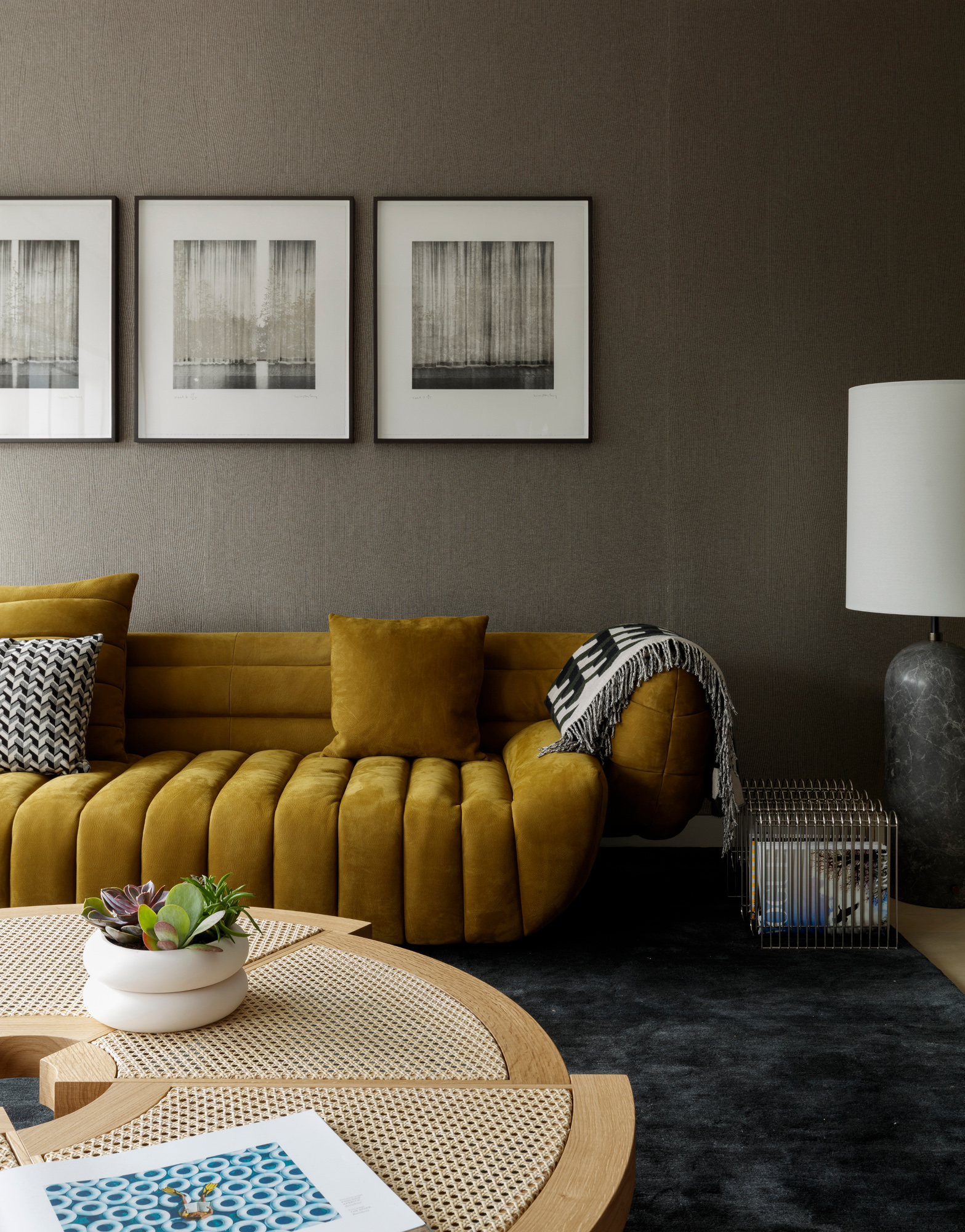
Coming into the design process with a balanced, neutral approach is key to ensuring you make fewer mistakes (though you're almost guaranteed to make some). ‘The two most common mistakes are overconfidence and under-confidence,’ says Eugene Colberg. Being overconfident ‘means you think you will figure it out on paper. Research other rooms you like and take note of what resonates for you. Try colors in small doses. Take stock of what you already have in the space. Make an informed decision based on this research. You need to understand how the color looks in the room, how the light moves throughout the day, and how it looks with your setup – only then will you know if that color scheme is truly a fit.’
Under-confidence, he adds, is when you are afraid of making a mistake – so you simply don’t do anything. ‘This can leave a room feeling dated.' Taking a risk with the rich yellow velvet of the sofa in this scheme by StudioMorey, for example, has paid off – and looks miles more impactful than a neutral option. 'Be confident enough to start the transformation, and know that anything is replaceable,' Eugene adds. 'If you do your due diligence, you will likely be happy with the results.’
How to use white in a living room
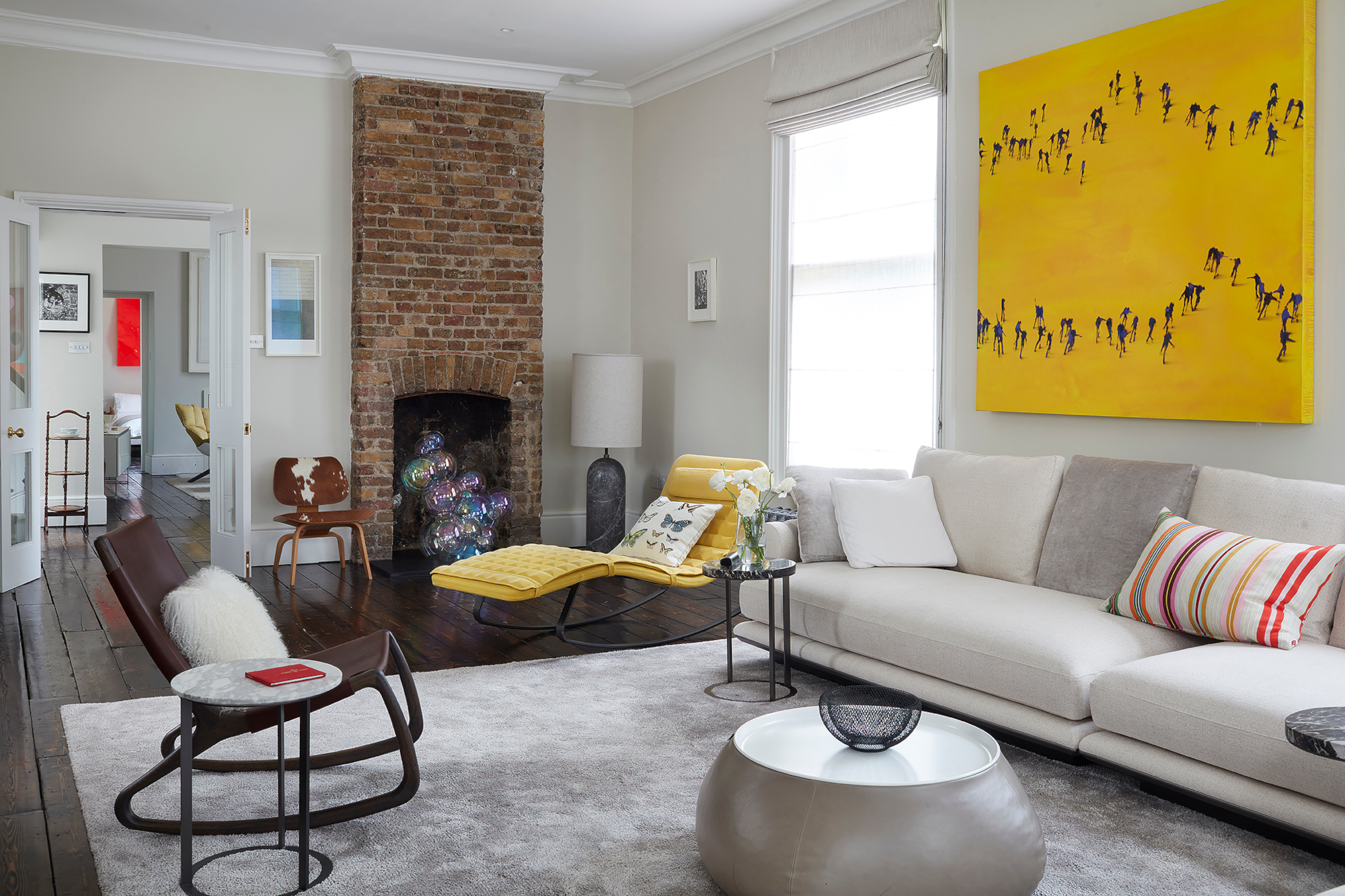
'White can be one of the most difficult colors to choose because there are so many variations and small differences of tone,' says Justyna Korczynska. 'You can have a very clean white, a chalky one, a greyed one, a white that has a hint of green or one with more of a yellow hue. This is because every white has an underlying tone. It might be something slightly warm or cool – the merest hint of red or blue, for example.'
So when you're looking for white living room ideas, keep in mind whether you want bright and crisp or soft and warm. And, of course, don't forget to test thoroughly. 'Whites can change hue dramatically from room to room in the same house, let alone from a paint shop to your own home, so always use paint samples or tester pots to check the exact tone,' Justyna adds. 'It’s a good idea to do this at different times of the day and evening to see how it looks in both natural and artificial light.'
How to use bold colors in a living room
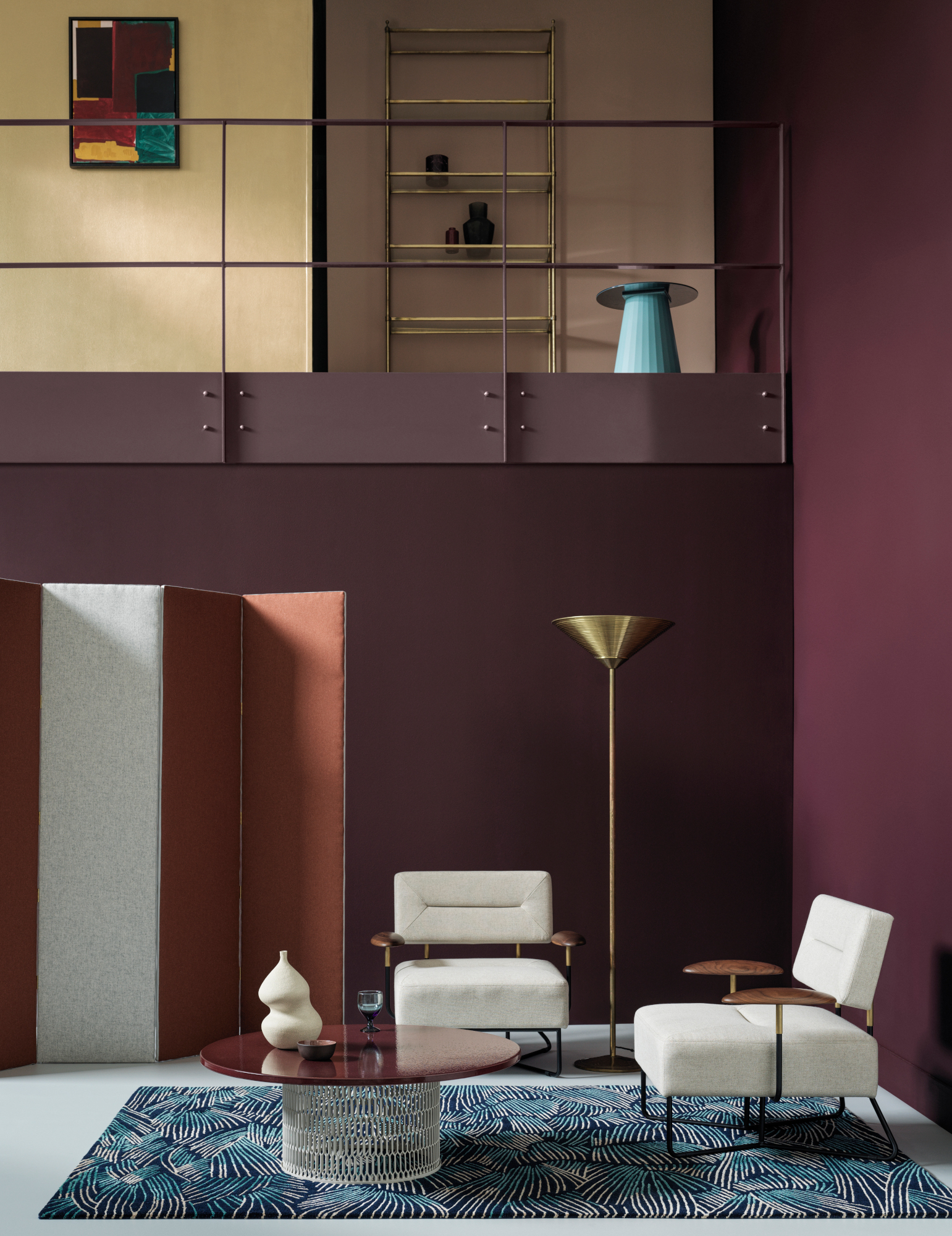
We've covered whites and neutrals – but what if you want something a little bolder in your living room scheme? Choosing a living room color trend like this is all about a measured approach, according to the experts.
‘Using bright colors is a statement, so it’s important to consider what works for you – and therefore for your home,’ says Justyna Korczynska. ‘Firstly, what is your personal style? Do you prefer modern, traditional, fun or more considered? Also, what is the atmosphere you’re looking to create? Color is an interpretation of your style, so select it carefully. When painting in bold hues on a bigger scale, make sure your accessories and furnishings are softer and more muted in colour to counter the effect.’
‘We don’t recommend going all out with bold color on everything, unless that is the look you want to achieve,’ says Eugene Colberg. ‘Having a visual hierarchy of colors – making it clear what the main components are, paired with accent pieces – creates a feeling of harmony and comfort in a living room.’
However, colorful living room ideas can work well in certain spaces. 'Naturally darker spaces need more of an injection of color,' says Irene Gunter. 'It could be subtle, like Normandy Grey by Little Greene, or punchier, like Sage Green.'
What color should I paint my living room?
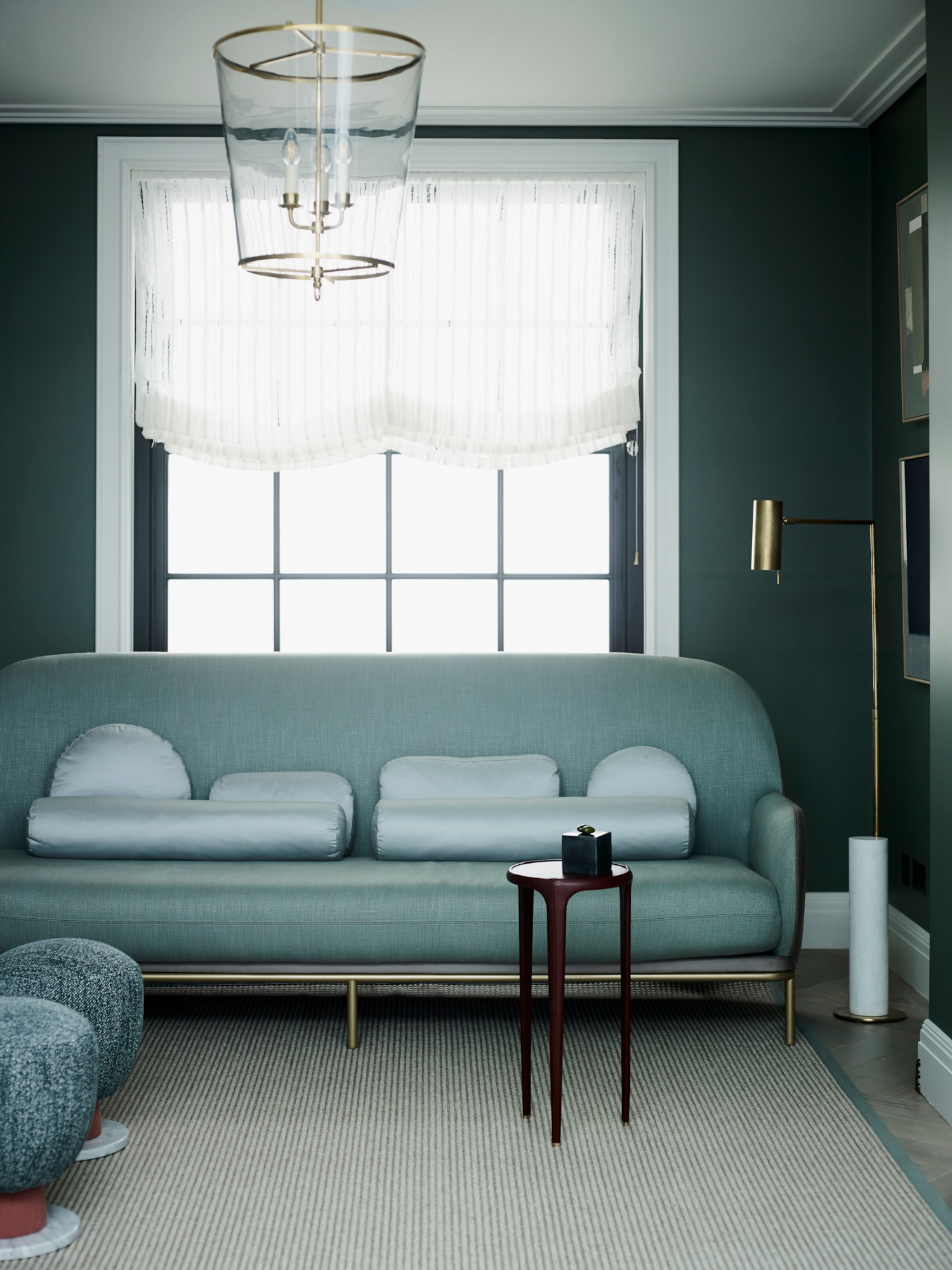
While the interior designers and paint experts we spoke to emphasized the importance of choosing a color that speaks to you, some of them did have their own personal favorites – which might be a useful source of information if you're struggling with where to start.
‘Mid greens are always a safe bet – calming and relaxing, and just what you want to snuggle down on the sofa on a blustery day,’ says Patrick O'Donnell. ‘Something more nuanced like French Gray, not too bright, creates a wonderful, restful environment – and team with a relaxed off white, rather than a pure white, for a gentle transition between walls and trim. Stirabout in Estate Eggshell would be a perfect pairing!’
'People want their living room to feel calming,' agrees Irene Gunter. 'For some that means neutral colors. For others that means something a little bolder like blues or greens, or shades of blush – but nothing too punchy. A fabulous example is the living room in the Belgravia Mews project (above), where we used Farrow & Ball’s Green Smoke on the walls.'
Patrick also enjoys a sophisticated pink. ‘More grown-up, earthy pinks – those with a little brown or ochre note, like Setting Plaster or Templeton Pink – will add warmth to any space,’ he says. ‘These colors will glow in a south facing room and bring a much needed cosy ambience to awkwardly lit spaces such as north facing rooms.’
‘I’m really embracing autumnal, jewel-like color combinations like aubergine and pale green, brick red with pops of jade green,’ adds Laura Stephens. ‘I find that living rooms with a lot of warmth in the color scheme are the most inviting. I’m veering away from cold greys and bright whites in these spaces.’
What color should I paint a small living room?
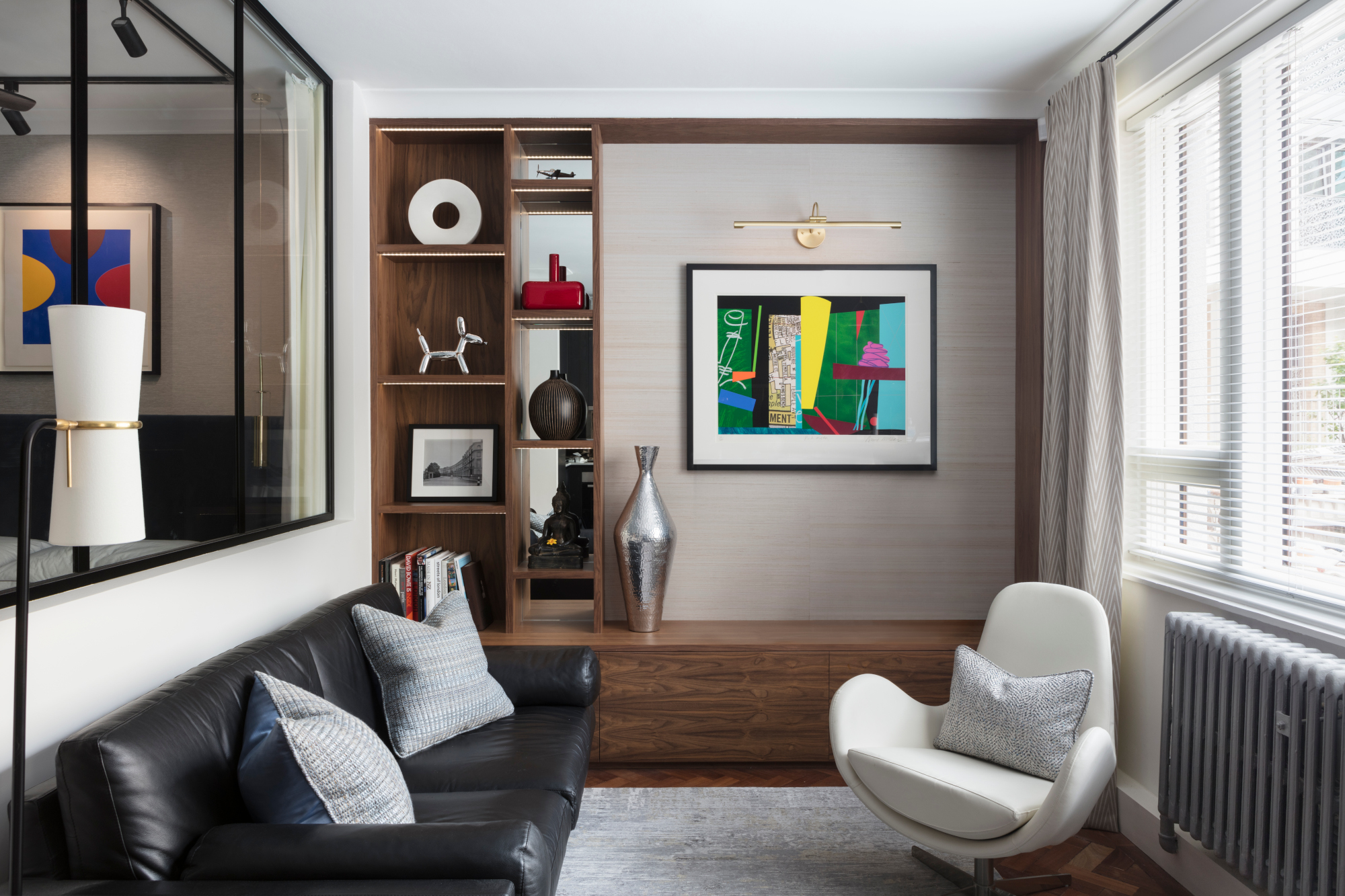
‘The amount of light or dark colour can alter the feel of the room, in the same way the saturation level of the colours can, too,’ says Justyna Korczynska. ‘In general, muted shades will open the space whereas brighter and highly saturated colours could overpower the room and make it appear smaller.’
It’s best not to go all-out bright, then – but there are still ways you can bring vibrancy into your scheme. ‘While softer shades can be used all over the room, bright colours are best in moderation in smaller spaces,’ Justyna adds. ‘By pairing enhancing hues, you can create a beautiful contrast of shades and make a small room look larger while still injecting a bold colour. With the right shade, a bright color can be impactful.’
Be The First To Know
The Livingetc newsletters are your inside source for what’s shaping interiors now - and what’s next. Discover trend forecasts, smart style ideas, and curated shopping inspiration that brings design to life. Subscribe today and stay ahead of the curve.

Ellen is deputy editor of Livingetc magazine. She works with our fabulous art and production teams to publish the monthly print title, which features the most inspiring homes around the globe, interviews with leading designers, reporting on the hottest trends, and shopping edits of the best new pieces to refresh your space. Before Livingetc she was deputy editor at Real Homes, and has also written for titles including Homes & Gardens and Gardeningetc. Being surrounded by so much inspiration makes it tricky to decide what to do first in her own flat – a pretty nice problem to have, really. In her spare time, Ellen can be found pottering around in her balcony garden, reading her way through her overstacked bookshelf or planning her next holiday.
-
 12 Essentials Every Cool, Collected Spring Host Needs — And You’ll Never Guess Where They’re From
12 Essentials Every Cool, Collected Spring Host Needs — And You’ll Never Guess Where They’re FromGuests will think you thought of everything, you just knew where to shop
By Julia Demer Published
-
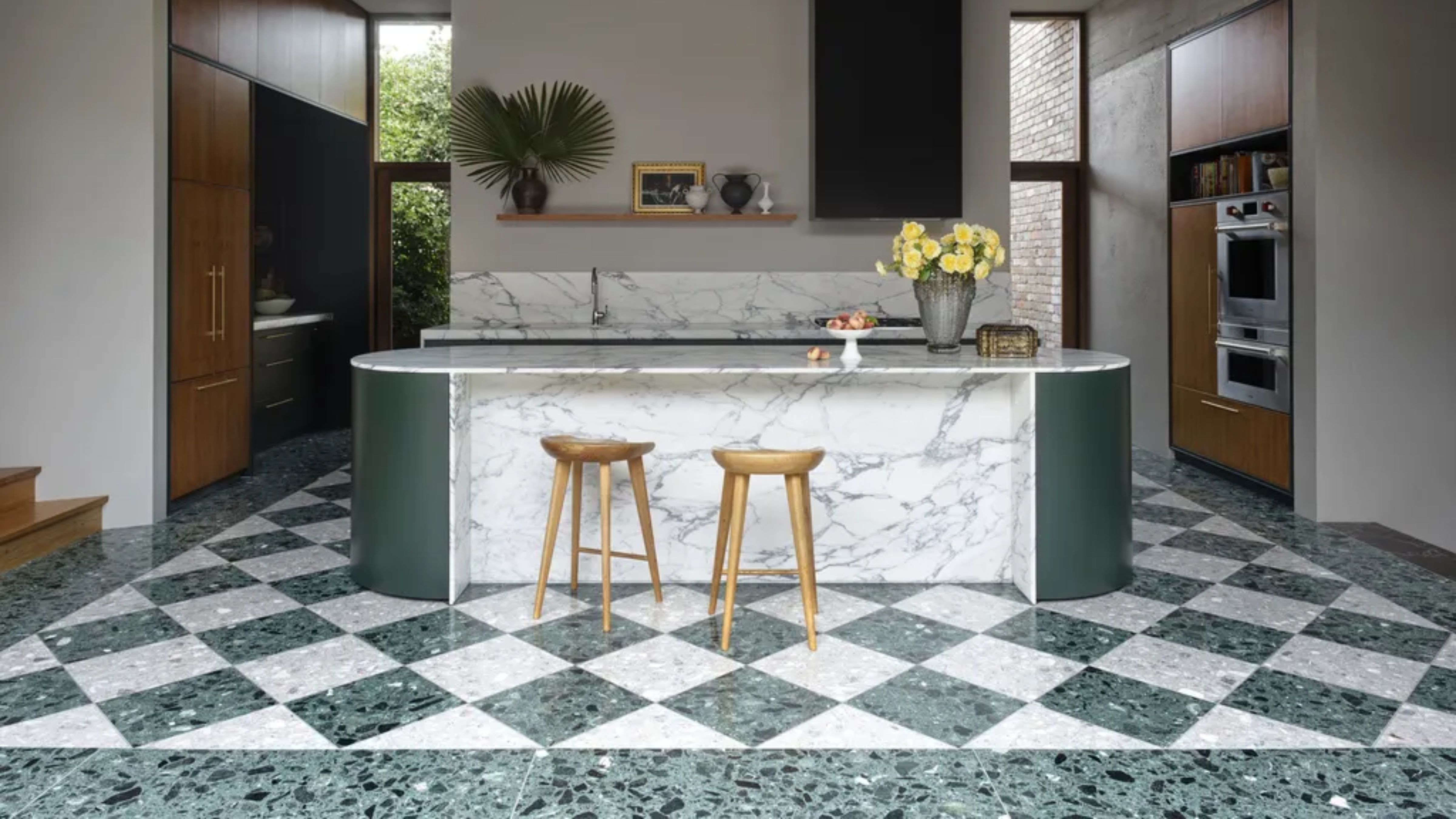 Smeg Says Teal, and We’re Listening — The Kitchen Shade of the Year Is Here
Smeg Says Teal, and We’re Listening — The Kitchen Shade of the Year Is HereDesigners are already using the soft, sea-glass green everywhere from cabinetry to countertops
By Julia Demer Published